Carolee Dean's Blog, page 18
December 7, 2017
Hunger Games Holiday Spoof Song
HUNGER GAMES HOLIDAY SONGby Carolee Dean(Sung to CHESTNUTS ROASTING ON AN OPEN FIRE)
G Em Bm7 Rabbits roasting on an open fire.G Em C DTributes shooting from the rear.G Bm7 Em D Mockingjays singing songs like a choir.Bm7 C DKids dressed up in combat gear. G Em Bm7 Everybody knows some arrows and a few berries, G Em C are what you need to win this fight. G Bm7 Em DBut Mutant mutts with their eyes all aglow,C Bm7 Gmake it hard to sleep tonight.
F GYou hope that medicine and soup is on its way, F Gand that Haymitch didn't drink the sponsors pay. Bm7 C GThough probably he's passed out now and sleeping, A DThis happens every time that there’s a reaping
G Em Bm7 And so I'm offering this simple tale, Em C about a bunch of kids with bad behavior. Bm7 Em DThough its been said many times many ways, C D G“May the odds be ever in your favor.”
I was cleaning out some old files and found this spoof on the young adult novel, The Hunger Games by Suzanne Collins that I wrote, complete with guitar chords) for a SCBWI (Society of Chidren's Book Writers and Illustrators) holiday party a few years back. We held the party at Alamosa Books in Albuquerque, NM. It's one of my all time favorite independent bookstores. It has closed since then but the song brings back fond memories of all of my dear SCBWI-New Mexico friends. Does anyone remember being there? Stay tuned next week for more holiday spoofs.
Published on December 07, 2017 08:00
December 3, 2017
HELP WITH HEARING FOR THE HOLIDAYS: 7 Tips for Being a Better Listener

In last week’s post, I talked about Tips for Communicating with your Hard of Hearing Relatives and Friends, but what if YOU are the one who is hard of hearing (at least some of the time)?
If you are over 18 years of age, there is a 15% chance that you have some degree of difficulty with your hearing according to The National Institute of Deafness and Other Communication Disorders (NIDOCD). The risk of suffering “disabling hearing loss” increases as you age. The prevalence is 2% for ages 45-54, 8.5% for 55-64, 25% for 65-74 and 50% for 75 and older. However, in the age group of 20-69, only 16% of people who might benefit from hearing aids have ever used them at all.
With those statistics in mind, my first suggestions for being a better listener is to get your hearing tested.
TIP #1 - Get Your Hearing Tested by an ASHA Certified Audiologist
If you suspect that you might have a hearing loss, get your hearing tested as soon as possible. A study conducted by John Hopkins and the National Institute on Aging showed that the brain naturally tends to shrink with age, but those with hearing loss appear to suffer more brain shrinkage and also more dementia. The “impoverished” auditory center may be shrinking due to lack of stimulation. Because of this, Frank Lin, MD, Ph.D, advocates for getting your hearing tested early. “You want to do it sooner rather than later. If hearing loss is potentially contributing to these differences we're seeing on MRI, you want to treat it before these brain structural changes take place."
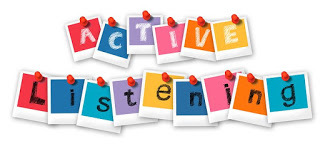
An audiologist can do more than just test your hearing. Many offer Aural Rehabilitation Strategies. These will help you make the most of your hearing whether you use hearing aids or not. I have outlined a few of these strategies below but you may find more at the ASHA page for Adult Aural/Audiologic Rehabilitation.
Note - I'm a speech-language pathologist, not an audiologist. This post contains tips from ASHA but also my personal observations. If you have concerns about your hearing, contact ASHA to find a certified audiologist near you.
TIP #2 - Learn to Watch Faces for Visual Cues
Formal speechreading training teaches you how the lips form speech sounds but you can learn a lot by simply watching people’s lips and becoming more aware of the difference between words like cat/cab, pit/pig, ham/hand. Facial expression and gestures also help us know if someone is “mad” or “glad.”
TIP #3 - Tell People What You Need and Be Specific
Simply telling someone that you can’t hear them may not help them be a better communicator. They will probably just talk louder or even yell. Being specific gives them a productive strategy to focus on. My husband frequently reminds me, “If you can’t see me, I can’t hear you,” because I have a tendency to start conversations from another room or with my back turned. “Could you slow down? I don’t want to miss what you’re saying,” is something else you could say. You may want to talk with your friends and family members about a catch phrase that will help “gently” remind them of your hearing difficulties.
TIP #4 - Ask the Speaker to REPHRASE vs. Repeat
If you have asked someone to repeat themselves and you still don’t understand them, ask instead, “Could you say that a different way,” or “Could you rephrase that?” There are many reasons why rephrasing may be better than repeating which I discussed at length in last week’s post.
In addition, it helps the speaker if you let them know specifically what you missed. Having spent many years in classrooms, I know how frustrating it is for a teacher to give ten minutes of directions and then have a student say, “What?” or “Huh?” The student may have actually heard most of the instructions and really only needs one small part repeated. “What page did you say the assignment was on?” or “What book did you say we are reading next week?” Likewise, in a conversation with family or friends, instead of asking them to repeat everything, try to get them to fill in the blanks. “Who did you say was in the hospital?” or “What was it you wanted me to bring for dinner?”
Be especially cautious about contractions, words like “can’t, don’t, couldn’t, wouldn’t.” Many people soften the final /t/ sound so much that it can’t be heard. Clarify with questions like, “Did you say you can watch my dog or you can NOT watch my dog?” or “Did you say I should try Aunt Rita’s cheese casserole or I should NOT?” These small distinctions may save you from getting food poisoning or missing Christmas dinner altogether because you did NOT get a dog sitter and DID miss your flight to Texas.
TIP #5 - Watch Where You Sit
In your own home you can rearrange the furniture and the lighting to better see the faces of those you are talking to, but if you are in someone else’s home, you may want to ask to sit at the end of the table so you don’t have conversation coming at you from every direction. When you are eating out, you may want to ask for a quiet table in a corner or ask to sit with a wall behind you. Carpet also tends to absorb background noise, so if you have a choice of rooms or restaurants, consider that as well.
TIP #6 - Educate Your Friends and Family
Be open about your hearing difficulties. Share my post from last week with friends and family by emailing the link or posting on Facebook. This may help you open up an honest conversation about your frustration and theirs. Talk about strategies that will help you hear them better. Tell them that you will be giving them gentle reminders about what is helpful to you because your relationship is important and you value what they have to say. Some audiologist provide recordings that simulate hearing loss. Sharing these with family and friends can be an eye opener as well as a conversation starter.
TIP #7- Be Kind to One Another
Above all, remember that communication breakdowns are difficult on everyone involved, not just the speaker...not just the listener. We are all bound to make mistakes in this area, but love covers a multitude of these errors.
Your family members may seem insensitive to your challenges and perhaps even uncaring, but if you assume good will, your remarks will come off as gentle reminders instead of rebukes. You are helping to educate them about your difficulties, not shame them for being a poor speaker (even if they are). Phrases like, “Why does everyone your age have to mumble?” are probably not going to help them know how to speak to you more effectively, but gentle and specific suggestions made with a smile will go a long way.
As for one additional tip for the SPEAKER, someone with a hearing impairment made a suggestion on last week’s post that I think is worth sharing.
“Please try to be patient, although I understand that it's annoying to deal with someone who isn't all together tuned in. And please don't ask with that edge in your voice, DO YOU HAVE YOUR HEARING AIDS IN??? This question sounds/feels more of an accusation than a genuine query.”
Patience and kindness go a log way. Communication is about Connection!
Published on December 03, 2017 07:46
November 26, 2017
WHAT DID YOU SAY? - 5 Tips for Communicating with Your Hard of Hearing Relatives and Friends During the Holidays

You’ve just spent Thanksgiving with a house full of noisy relatives along with your eighty-year-old Aunt Olive who mostly sits alone in the corner. You assume this is because she’s feeble minded or anti-social, but then you get stuck in the old folks section for dinner and realize she’s actually quite quick-witted and entertaining when she can hear what people are saying and take part in the conversation. She is also full of fascinating stories. She’s about half way through a tale of hitchhiking across Europe in her thirties and spending time in a hippie commune when, oops! Her ride is leaving and she has to go.
You’ll have to hear the end of the story at Christmas.
This little vignette isn’t just about Aunt Olive though. Your relatives in their 40s, 50s, 60s, and 70s May also be experiencing some degree of hearing loss. You might even find yourself having difficulty catching all of the conversation in these loud, crowded communication environments.
I recently had a lengthy conversation with my father about how difficult it is for people with hearing difficulties to take part in large family gatherings. Interestingly, while my daughter was visiting from college she asked ME if my hearing was getting worse. This has given me the opportunity to look at the issue from both sides (listener and speaker) and to explore what can be done about these communication mishaps. It's prime time to talk about hearing loss because this issue will continue to grow as baby boomers age. At times we've all experienced communication breakdowns, but it's not always clear to us what we can do to repair them.
There are several small practices each party in the verbal exchange can employ to make communication smoother. This week I will discuss tips for the speaker and next week I will talk about tips for the listener. Note - I'm not an audiologist. These are my personal observations. If you have concerns about your hearing, contact an AN ASHA CERTIFIED AUDIOLOGIST.
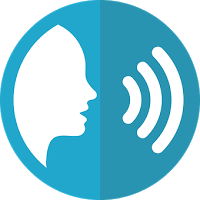
5 TIPS FOR THE SPEAKER
1 - BE AN ATTENTION GRABBER.
2 - ESTABLISH YOUR (WORD) BOUNDARIES.
3 - WATCH THE LIPS.
4 - SAY IT AGAIN, SAM.
5 - PERFECT THE PUNCH LINE.
Let's explore each of these in more detail:
Tip #1 - BE AN ATTENTION GRABBER
When speaking to anyone, first be sure to get their attention. "Hey, Bob!" When you have their attention, establish eye contact. Then say what is on your mind. This is valuable not only for people who are hard of hearing but also for children who may have attention deficits or even for creative people who tend to daydream and may not realize you are even speaking to them until you are half way through your message.
Tip #2 - ESTABLISH YOUR (WORD) BOUNDARIES
When someone says they didn't hear you, it may be tempting to raise your voice which might not be that helpful, especially if you end up shouting at them. Instead, increase your volume a little and focus on clearly enunciating the ends of words. These sounds often get so minimized during connected speech that they may be dropped completely. It's easy to observe this if you listen to someone speaking a foreign language. The words seem to run together and it is difficult to determine where one word ends and another one begins. This makes it difficult to distinguish the word boundaries. This is also why children often misunderstand spoken phrases in humorous ways. Here are a few Christmas classics which I found at ABC News and Most Misheard Holiday Music Lyrics:
"Deck the halls with bras of holly."
"With a corncob pipe and a butt and a nose."
"Bells on cocktail rings."
"Olive the other reindeer."
Just be careful not to OVER enunciate which may have the effect of making your hard of hearing relatives feel like you are talking down to them.
Tip #3 - WATCH THE LIPS
People who have hearing difficulties often consciously or unconsciously rely on visual information to help them interpret a message. Facial expression can help us understand the emotional content of a message and lip reading gives important information about sounds. Some sounds are more visual than others. Those made at the front of the mouth /m, p, b, v, f, w, th/ are easier to see than those made near the back /r, k, g/. This small amount of visual information can make the difference in understanding whether Uncle Joe had a "fifth" or had a "fit," and whether Grandma is planning to serve "ham," "spam," or "lamb." My husband has tinnitus, a constant ringing in the ears. An audiologist told him that hearing aids would not help at this point, but that he should advise me that, “If you can’t see me, I can’t hear you.” (UPDATE: THE AMERICAN TINNITUS ASSOCIATION REPORTS THAT HEARING AIDS DO HELP RELIEVE TINNITUS FOR SOME PEOPLE. SEE THEIR POST).With my husband's gentle reminders I have been surprised by how often I try to start conversations in another room, or how I start a conversation and then walk out of the room, or how I try to multi task by talking to my husband while my back is turned to him and the water is running because I'm washing dishes. I'm not saving time if I have to repeat myself.
IF YOU HAVE CONCERNS ABOUT YOUR HEARING OR TINNITUS, CONSULT AN ASHA CERTIFIED AUDIOLOGIST. GET INFORMATION HERE.
Tip #4 - SAY IT AGAIN SAM
If someone has asked you to repeat yourself once or twice and you have tried the above tactics and it hasn't helped. Try to rephrase your message. Instead of continuing to repeat, "How ya doin'?" twenty times, louder and louder, think about how to restate the same question. "I heard you had heart surgery. Are you feeling better?" By rephrasing the question you are using different words and therefore different sounds, some of which may be easier to understand than others. Some sounds are quieter because they are unvoiced while others are louder simply because they are voiced. Say the following sound pairs and listen to the difference (/s,z/ /f,v/). Sounds that continue also offer more auditory information than sounds that stop. Listen to the difference between sounds like /z/ that can be held out and sounds like /b/ that stop more abruptly. Also, sounds have different pitches. The /s/ sound has a higher pitch than the /g/ sound. If a person has a high frequency hearing loss, they may not hear sounds that naturally have a higher pitch. See the Speech Banana Chart to get a better idea of what this looks like. Also, rephrasing a comment might make it longer which may give additional clues about the context of the message.
Tip #5 - PERFECT THE PUNCH LINE
If a joke is worth telling, it's worth telling well. Have you ever missed the end of a joke and turned to a friend who was laughing his head off to ask, "What's so funny?" only to have him say, "I have no idea." Just because a room full of people laugh at your funny stories doesn't mean they all got the punch line. Slow down for the punch line, make sure you have everyone's undivided attention, then nail the ending. There is nothing worse than being asked to repeat the end of your joke. The timing is all wrong at that point. On the other hand, it's also uncomfortable to feel that everyone got the joke but you. My father pointed out to me that people have a tendency to rush through the end of a joke and actually lower their voice so they can barely be heard, but a professional comedian would never do this. They know how to build anticipation in their audience, so be a pro, don't kill your own joke.
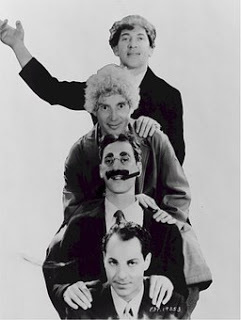
As a speech-language pathologist working in the public schools, I specialize in communication difficulties, but that doesn't mean I intuitively know how to consistently practice good communication at home. I took courses in audiology for my master’s degree, so as I was contemplating this article, I looked up resources on the American Speech-Language and Hearing Association (ASHA) website. ASHA offers a poster that provides tips for communicating with people who are hard-of-hearing. The poster makes four broad suggestions with more specific actions outlined in each category.
1) Get and keep the person's attention.
2) Help yourself be heard.
3) Say it another way.
4) Make sure you were understood.
See TIPS FROM ASHA for additional examples under each category.
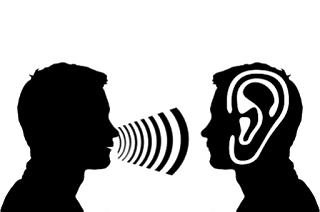
Finally, let's look at some signs that your family members are not understanding you:
- They frequently ask you to repeat yourself or to "speak up."
- They may complain that you mumble, though your friends seem to hear you just fine, thank you very much.
- They complain about loud restaurants or opt to stay in while “you kids go out.”
- They nod and smile and laugh, but their eyes tell you they have no idea what planet you are on.
Okay, that is a lot of advice for the speaker, but what about the listener, the person who is hard of hearing? What can they do to educate their family members about their difficulties and ease the communication exchange for everyone? First off, share this post along with the suggestions at the ASHA website. It can be a great way to open up the conversation about your hearing difficulties.
I will talk about more specific tips for the hard-of-hearing in next week's post. In the meantime, practice the communication suggestions outlined above. They are good ways of communicating with anyone, not just the hearing challenged. Also, focus on going out of your way to spend a few quiet moments talking with people who have communication challenges. That way when you see Aunt Olive at Christmas, you'll be ready to hear the rest of her story.
Do you have other tips for better communication? If so, please leave your comments below.
Published on November 26, 2017 06:38
November 17, 2017
Writing Video Game Stories
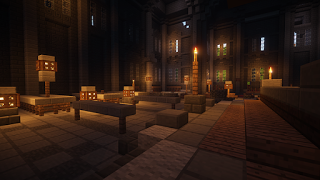 free images from pixabay.com
free images from pixabay.comWhen I worked at a local high school, many of my students wanted to become video game designers. Video games often contain great story plots! I created the powerpoint below to give struggling writers a simple way of creating a story using the format of a video game. Ideally the powerpoint would be downloadable for each student and they would write directly on the slides. I'm still working on a way to make that more accessible, so sign up for my newsletter on the CONTACT page if you want updates. In the meantime, you may share the link below to the power point/YouTube video with your students. You will have to pause each image or it will automatically move forward since it is a video.
A few years ago, I conducted a writing workshop with a group of dyslexic students, grades 5-12, at the Annual Conference for the Southwest Branch of the International Dyslexia Association using this same power point. I spent 90 minutes talking to students about story structure using my story plotting technique called The Secret Language of Stories. Megan Shanley, Occupational Therapist and Assistive Technology Specialist, downloaded my powerpoint below onto iPads for each student and showed them several strategies for recording their ideas, such as the voice-to-print feature of the device along with apps for word prediction. Her husband, Dan, a high school English teacher, then helped us go around the room and assist students with creating original stories for the last half of our session. The results were phenomenal. By the end of our workshop, several students stood up and shared their insightful and funny stories. It was exciting to see students who struggled with the written word be so successful and creative with stories.
So try it out and let me know how it goes. I love finding new ways to inspire struggling writers.
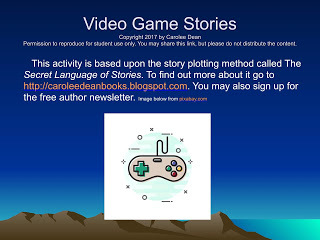
How to Create a Video Game Story
Published on November 17, 2017 08:10
November 5, 2017
Three Time Saving Tips for Green Chile Chicken Enchilada Casserole
One of my favorite dishes growing up in Southern California was Green Chile Chicken Enchilada Casserole. My mother used canned Ortega green Chiles and I had no idea there was anything better until I got married and moved to Albuquerque, New Mexico. My husband and I grew quite addicted to Hatch green Chile. Hatch is a town in southern New Mexico known for it’s exceptionally hot chile. Green Chile chicken Enchiladas could be found all across the state and “Red or Green” was offered everywhere from McDonald’s to Village Inn for everything from scrambled eggs to hamburgers.

When we moved to Colorado, everything changed. Chile was available, but not nearly as abundantly or as spicy, even at authentic Mexican food restaurants. We had to do a thorough search of the freezer section of several local grocery stores to find Bueno Autumn Roast and I dusted off my old casserole recipe, with a few modifications.
Quick Green Chile Chicken Enchilada Casserole(Makes 2 large 9x12 inch casseroles)
Ingredients
2 cups water or chicken broth1 - 26 oz can of cream of chicken soup1- 13 oz container chopped green chile4 cups finely chopped chicken1 - 16 oz container of sour cream1 - 22 count package of tostadas6 cups of Mexican Cheese (or a cheddar and Jack cheese combination)
1. Preheat Oven to 3502. Spray 2- 9x12 inch pans with cooking spray3. Combine first five ingredients in a large pan and heat until bubbly4. Spread a thin layer of this filling on the bottom of each pan.5. Cover with tostadas. About 4-5 broken into pieces to fit. 16-20 total.6. Spread another layer of sauce and 1 1/2 cups of the cheese.7. Repeat steps 5-6. Top the final layer with cheese.8. Bake one casserole for 30 minutes. 9. Freeze the other casserole and save for another day.
Three Time Saving Tips:
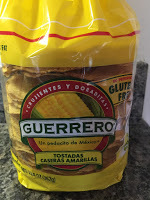
1. Extra Crispy - Instead of cooking each tortilla, buy a bag of crispy, pre-made tostada shells. They will soften during cooking but won’t get soggy like fried or dipped tortillas often do.
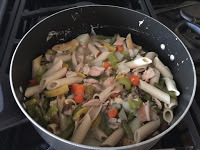 2. Eat More Chicken - Instead of cooking or boiling a chicken yourself, buy a pre-cooked rotisserie chicken. With the leftover chicken, make another meal like this hearty chicken, vegetable, pasta soup.
2. Eat More Chicken - Instead of cooking or boiling a chicken yourself, buy a pre-cooked rotisserie chicken. With the leftover chicken, make another meal like this hearty chicken, vegetable, pasta soup.
An alternative is to use canned chicken. To save money use more soup and less chicken.
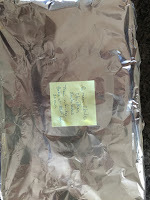
3. Two for One - As long as you are going to all of that trouble to dirty all those pans, get in the habit of doubling the recipe and making another casserole to freeze. This recipe already provides enough ingredients for two large (or 4 small) casseroles. It doesn’t take that much longer and you will have an extra meal prepared for an especially busy work day.

When we moved to Colorado, everything changed. Chile was available, but not nearly as abundantly or as spicy, even at authentic Mexican food restaurants. We had to do a thorough search of the freezer section of several local grocery stores to find Bueno Autumn Roast and I dusted off my old casserole recipe, with a few modifications.
Quick Green Chile Chicken Enchilada Casserole(Makes 2 large 9x12 inch casseroles)
Ingredients
2 cups water or chicken broth1 - 26 oz can of cream of chicken soup1- 13 oz container chopped green chile4 cups finely chopped chicken1 - 16 oz container of sour cream1 - 22 count package of tostadas6 cups of Mexican Cheese (or a cheddar and Jack cheese combination)
1. Preheat Oven to 3502. Spray 2- 9x12 inch pans with cooking spray3. Combine first five ingredients in a large pan and heat until bubbly4. Spread a thin layer of this filling on the bottom of each pan.5. Cover with tostadas. About 4-5 broken into pieces to fit. 16-20 total.6. Spread another layer of sauce and 1 1/2 cups of the cheese.7. Repeat steps 5-6. Top the final layer with cheese.8. Bake one casserole for 30 minutes. 9. Freeze the other casserole and save for another day.
Three Time Saving Tips:

1. Extra Crispy - Instead of cooking each tortilla, buy a bag of crispy, pre-made tostada shells. They will soften during cooking but won’t get soggy like fried or dipped tortillas often do.
 2. Eat More Chicken - Instead of cooking or boiling a chicken yourself, buy a pre-cooked rotisserie chicken. With the leftover chicken, make another meal like this hearty chicken, vegetable, pasta soup.
2. Eat More Chicken - Instead of cooking or boiling a chicken yourself, buy a pre-cooked rotisserie chicken. With the leftover chicken, make another meal like this hearty chicken, vegetable, pasta soup. An alternative is to use canned chicken. To save money use more soup and less chicken.

3. Two for One - As long as you are going to all of that trouble to dirty all those pans, get in the habit of doubling the recipe and making another casserole to freeze. This recipe already provides enough ingredients for two large (or 4 small) casseroles. It doesn’t take that much longer and you will have an extra meal prepared for an especially busy work day.
Published on November 05, 2017 18:23
Three Time Saving Tips Green Chile Chicken Enchilada Casserole
One of my favorite dishes growing up in Southern California was Green Chile Chicken Enchilada Casserole. My mother used canned Ortega green Chiles and I had no idea there was anything better until I got married and moved to Albuquerque, New Mexico. My husband and I grew quite addicted to Hatch green Chile. Hatch is a town in southern New Mexico known for it’s exceptionally hot chile. Green Chile chicken Enchiladas could be found all across the state and “Red or Green” was offered everywhere from McDonald’s to Village Inn for everything from scrambled eggs to hamburgers.

When we moved to Colorado, everything changed. Chile was available, but not nearly as abundantly or as spicy, even at authentic Mexican food restaurants. We had to do a thorough search of the freezer section of several local grocery stores to find Bueno Autumn Roast and I dusted off my old casserole recipe, with a few modifications.
Quick Green Chile Chicken Enchilada Casserole(Makes 2 large 9x12 inch casseroles)
Ingredients
2 cups water or chicken broth1 - 26 oz can of cream of chicken soup1- 13 oz container chopped green chile4 cups finely chopped chicken1 - 16 oz container of sour cream1 - 22 count package of tostadas6 cups of Mexican Cheese (or a cheddar and Jack cheese combination)
1. Preheat Oven to 3502. Spray 2- 9x12 inch pans with cooking spray3. Combine first five ingredients in a large pan and heat until bubbly4. Spread a thin layer of this filling on the bottom of each pan.5. Cover with tostadas. About 4-5 broken into pieces to fit. 16-20 total.6. Spread another layer of sauce and 1 1/2 cups of the cheese.7. Repeat steps 5-6. Top the final layer with cheese.8. Bake one casserole for 30 minutes. 9. Freeze the other casserole and save for another day.
Three Time Saving Tips:

1. Extra Crispy - Instead of cooking each tortilla, buy a bag of crispy, pre-made tostada shells. They will soften during cooking but won’t get soggy like fried or dipped tortillas often do.
 2. Eat More Chicken - Instead of cooking or boiling a chicken yourself, buy a pre-cooked rotisserie chicken. With the leftover chicken, make another meal like this hearty chicken, vegetable, pasta soup.
2. Eat More Chicken - Instead of cooking or boiling a chicken yourself, buy a pre-cooked rotisserie chicken. With the leftover chicken, make another meal like this hearty chicken, vegetable, pasta soup.
An alternative is to use canned chicken. To save money use more soup and less chicken.

3. Two for One - As long as you are going to all of that trouble to dirty all those pans, get in the habit of doubling the recipe and making another casserole to freeze. This recipe already provides enough ingredients for two large (or 4 small) casseroles. It doesn’t take that much longer and you will have an extra meal prepared for an especially busy work day.

When we moved to Colorado, everything changed. Chile was available, but not nearly as abundantly or as spicy, even at authentic Mexican food restaurants. We had to do a thorough search of the freezer section of several local grocery stores to find Bueno Autumn Roast and I dusted off my old casserole recipe, with a few modifications.
Quick Green Chile Chicken Enchilada Casserole(Makes 2 large 9x12 inch casseroles)
Ingredients
2 cups water or chicken broth1 - 26 oz can of cream of chicken soup1- 13 oz container chopped green chile4 cups finely chopped chicken1 - 16 oz container of sour cream1 - 22 count package of tostadas6 cups of Mexican Cheese (or a cheddar and Jack cheese combination)
1. Preheat Oven to 3502. Spray 2- 9x12 inch pans with cooking spray3. Combine first five ingredients in a large pan and heat until bubbly4. Spread a thin layer of this filling on the bottom of each pan.5. Cover with tostadas. About 4-5 broken into pieces to fit. 16-20 total.6. Spread another layer of sauce and 1 1/2 cups of the cheese.7. Repeat steps 5-6. Top the final layer with cheese.8. Bake one casserole for 30 minutes. 9. Freeze the other casserole and save for another day.
Three Time Saving Tips:

1. Extra Crispy - Instead of cooking each tortilla, buy a bag of crispy, pre-made tostada shells. They will soften during cooking but won’t get soggy like fried or dipped tortillas often do.
 2. Eat More Chicken - Instead of cooking or boiling a chicken yourself, buy a pre-cooked rotisserie chicken. With the leftover chicken, make another meal like this hearty chicken, vegetable, pasta soup.
2. Eat More Chicken - Instead of cooking or boiling a chicken yourself, buy a pre-cooked rotisserie chicken. With the leftover chicken, make another meal like this hearty chicken, vegetable, pasta soup. An alternative is to use canned chicken. To save money use more soup and less chicken.

3. Two for One - As long as you are going to all of that trouble to dirty all those pans, get in the habit of doubling the recipe and making another casserole to freeze. This recipe already provides enough ingredients for two large (or 4 small) casseroles. It doesn’t take that much longer and you will have an extra meal prepared for an especially busy work day.
Published on November 05, 2017 18:23
Build a Better Brain for your Baby Through Reading Aloud - Free Toolkit for ages birth-5
 The American Speech-Language Hearing Association has partnered with an organization called Read Aloud 15 Minutes to create free handouts in both English and Spanish that provide information about communication development for seven different age groups birth to age 5. The Tool Kit outlines important developmental milestones in the areas of speaking, listening and understanding. Tips are provided for supporting child development at each stage.
The American Speech-Language Hearing Association has partnered with an organization called Read Aloud 15 Minutes to create free handouts in both English and Spanish that provide information about communication development for seven different age groups birth to age 5. The Tool Kit outlines important developmental milestones in the areas of speaking, listening and understanding. Tips are provided for supporting child development at each stage.The Took Kit is comprised of a series of seven handouts for each age group.
Birth–3 months4–6 months7–12 months1–2 years2–3 years3–4 years4–5 yearsDaily reading and talking with young children are two simple ways parents can aid their child’s development. If parents have concerns about their child, they should seek an evaluation from a certified audiologist or speech-language pathologist. Intervention is most effective when done early. Young children who have significant speech and language delays that go untreated often have reading difficulties during the school years.ASHA is encouraging certified audiologists, speech-language pathologists, pediatricians, early childhood educators, librarians, and other professionals to use this online resource and either forward or print for parents to use.
To learn more about the importance of reading aloud to children go to readaloud.org.
(Image from Pixabay)
Published on November 05, 2017 09:00
October 29, 2017
Four Picture Books About Real Kids Facing Disability, Illness and Adversity
In my work with students with disabilities, I have often used stories about real kids facing real challenges. I especially like the picture book format because this genre gets to the heart of a story so quickly and eloquently. When these books follow a narrative structure, I have the opportunity to talk about plot and story form as well as themes of perseverance and hope.
Four excellent picture books about real kids facing disability, illness and adversity are below:
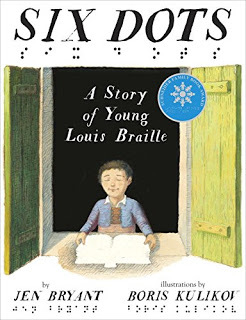
[image error]Six Dots: The Story of Young Louis Braille by Jen Bryant illustrated by Boris Kulikov (2016) Random House; New York. Grades K-4.
SUMMARY: Louis Braille wants to read but there are no books for blind children in his small French village. He attends the Royal Academy for the Blind in Paris and is excited when he is presented with a book with raised letters, but the words are the size of his hand and the books are huge which limits the volumes the library can contain. He makes it his mission to produce a reading and writing format for the visually impaired and realizes his dream at the age of fifteen when he creates a system using six dots to represent all the letters of the alphabet.
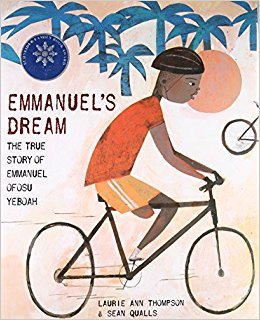
Emmanuel's Dream: The True Story of Emmanuel Ofosu Yeboah written by Laurie Ann Thompson and illustrated by Sean Quails (2015) Random House; New York. Grades K-2.
SUMMARY: Emmanuel is born in Ghana, West Africa with a deformed leg. Most people think he won’t amount to much, but his mother encourages him to believe in himself and follow his dreams. He hops to school on his good leg two miles each way and learns to play soccer with his classmates. When his mother becomes ill, he leaves home for the city at the tender age of thirteen to earn money to support her. He later becomes a cyclist and rides four hundred miles across Ghana to promote awareness about people with disabilities. The film version, Emmanuel’s Gift, is narrated by Oprah Winfrey.
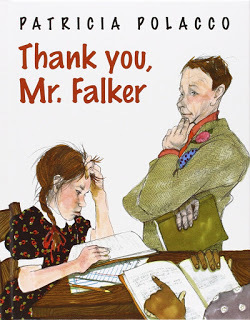
Thank You, Mr. Falker written and illustrated by Patricia Polacco (1998). Philomel Books; New York. Ages 5-8. Grades K-3.
SUMMARY: Patricia Polacco, renowned illustrator and children’s book author, tells of her personal experiences with dyslexia and how one caring teacher helped her overcome bullying and learn how to read. Video interviews with Polacco talking about the book and her experiences with dyslexia may be found at Reading Rockets.

[image error]
Sadako and the Thousand Paper Cranes by Eleanor Coerr (1977) Puffin: New York: Ages 4-8 for the picture book and Grades 2-6 for the chapter book. This title is available as both a short chapter book (ISBN 0-14-240113-7) and a picture book (ISBN 0-698-11588-0).
SUMMARY: Sadako develops leukemia as a result of radiation exposure during WWII. She sets a goal of making 1,000 origami paper cranes because of the belief in Japan that if a person completes this task their wish will come true. She wishes not only for health, but also for peace. Her classmates help her complete the cranes and also raise money to build a memorial. Though she dies at the age of 12, Sadako is immortalized by this beautiful story as well as a statue of her image holding a golden crane at the Hiroshima Peace Memorial in Japan. Most of the paper cranes were buried with Sadako, but her brother donated one of the few that remain to the WTC Visitor Center in New York See the article. More information about Sadako as well as lesson plans and a teacher's guide for the book may be found at the Origami Resource Center.
Four excellent picture books about real kids facing disability, illness and adversity are below:

[image error]Six Dots: The Story of Young Louis Braille by Jen Bryant illustrated by Boris Kulikov (2016) Random House; New York. Grades K-4.
SUMMARY: Louis Braille wants to read but there are no books for blind children in his small French village. He attends the Royal Academy for the Blind in Paris and is excited when he is presented with a book with raised letters, but the words are the size of his hand and the books are huge which limits the volumes the library can contain. He makes it his mission to produce a reading and writing format for the visually impaired and realizes his dream at the age of fifteen when he creates a system using six dots to represent all the letters of the alphabet.

Emmanuel's Dream: The True Story of Emmanuel Ofosu Yeboah written by Laurie Ann Thompson and illustrated by Sean Quails (2015) Random House; New York. Grades K-2.
SUMMARY: Emmanuel is born in Ghana, West Africa with a deformed leg. Most people think he won’t amount to much, but his mother encourages him to believe in himself and follow his dreams. He hops to school on his good leg two miles each way and learns to play soccer with his classmates. When his mother becomes ill, he leaves home for the city at the tender age of thirteen to earn money to support her. He later becomes a cyclist and rides four hundred miles across Ghana to promote awareness about people with disabilities. The film version, Emmanuel’s Gift, is narrated by Oprah Winfrey.

Thank You, Mr. Falker written and illustrated by Patricia Polacco (1998). Philomel Books; New York. Ages 5-8. Grades K-3.
SUMMARY: Patricia Polacco, renowned illustrator and children’s book author, tells of her personal experiences with dyslexia and how one caring teacher helped her overcome bullying and learn how to read. Video interviews with Polacco talking about the book and her experiences with dyslexia may be found at Reading Rockets.

[image error]
Sadako and the Thousand Paper Cranes by Eleanor Coerr (1977) Puffin: New York: Ages 4-8 for the picture book and Grades 2-6 for the chapter book. This title is available as both a short chapter book (ISBN 0-14-240113-7) and a picture book (ISBN 0-698-11588-0).
SUMMARY: Sadako develops leukemia as a result of radiation exposure during WWII. She sets a goal of making 1,000 origami paper cranes because of the belief in Japan that if a person completes this task their wish will come true. She wishes not only for health, but also for peace. Her classmates help her complete the cranes and also raise money to build a memorial. Though she dies at the age of 12, Sadako is immortalized by this beautiful story as well as a statue of her image holding a golden crane at the Hiroshima Peace Memorial in Japan. Most of the paper cranes were buried with Sadako, but her brother donated one of the few that remain to the WTC Visitor Center in New York See the article. More information about Sadako as well as lesson plans and a teacher's guide for the book may be found at the Origami Resource Center.
Published on October 29, 2017 08:14
August 29, 2017
Deception Pass, The Eclipse, and Winnie-the-Pooh

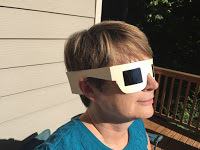
Last week was quite an adventure. My husband and I flew to Seattle and then took the train to Bellingham, Washington where we spent a few days with my brother and sister-in-law and got to watch the eclipse. We squeezed in a drive to Vancouver, Canada and a ferry boat ride to the San Juan Islands where we visited Friday Harbor and Deception Pass. Now wouldn't those make good book titles?
My creative wheels are turning.
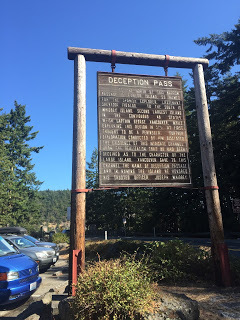
On Wednesday my husband flew home and I took the train to Portland where I was graciously welcomed by members of the Oregon Branch of the International Dyslexia Association. On Thursday I gave a workshop on Adventures in Verse: Using Poetry to Support Reading, Writing and Speech. Afterward my good friend, Paula Moraine, and I held teacher workshops for the Oregon Branch including a three-hour workshop on The Secret Language of Stories. I will be holding several SLOS Workshops this fall in Colorado, New Jersey, Georgia and Los Angeles at various conferences across the country. There is a tab on this blog where you may learn all about SLOS and find several stories that I have already analyzed using this method that I created to teach writing and story analysis to students of all ages.
On today's post I'm including an analysis of Finding Winnie, the story Paula and I shared at the Oregon workshop for those who so graciously attended and for anyone else who might be interested. Paula has added a wonderful executive function perspective to my material and has written two books on the subject.
[image error]
Finding Winnie: The True Story of the World’s Most Famous Bear by Lindsay Mattock. Winner of the Caldecott Medal.
SUMMARY: In 1914, Harry Colebourn, on his way to war, rescued a baby bear and took her with him across the ocean. He named her Winnie and left her at the London Zoo where a small boy named Christopher Robin befriended her. This true story of the bear that inspired Winnie-the-Pooh is told from the perspective of Harry’s great granddaughter, Lindsay Mattock.
ORDINARY WORLD: Harry Colebourn lives in Winnipeg and works as a veterinarian. CALL AND RESPONSE: World War I breaks out and Harry gets on a train with the other troops headed to Valcartier, Canada.MENTORS, GUIDES, & GIFTS: He gets off of the train to take a little walk around the station and pays a trapper twenty dollars for a bear. He names the bear Winnipeg to remind his regiment of home as they gather in Valcartier and prepare to go across the sea. CROSSING: Harry takes Winnie with him in a giant ship across the Atlantic Ocean. NEW WORLD: The regiment trains on the Salisbury Plain and Winnie becomes the Mascot of the Second Canadian Infantry Brigade.PROBLEM, PRIZE, PLAN: The order comes that it is time to fight. Harry doesn’t want Winnie to get hurt so he plans to take her some place safe.MIDPOINT ATTEMPT: Harry takes Winnie to the London Zoo. DOWNTIME RESPONSE: Harry and Winnie say goodbye. He tells her, “I’ll always love you. You’ll always be my bear.”CHASE & ESCAPE: Harry goes off to take care of the horses at the front in France. DEATH & TRANSFORMATION: It seems that Winnie’s story is over, but then a boy named Christopher Robin comes to the zoo and a new story begins.CLIMAX/ THE FINAL TEST: Christopher Robin plays in the bear enclosure with Winnie. He loves the bear so much that he names his stuffed bear Winnie-the-Pooh. Playing with Winnie inspires him to take his stuffed bear on adventures in the woods.FINAL REWARD: Christopher Robin’s father, A.A. Milne, writes many famous books about his son and his bear and that’s how Harry’s Winnie becomes the famous Winnie-the-Pooh. Harry returns to visit Winnie and is happy to discover that she has found people who love her. A statue of Winnie and Harry is unveiled in Winnipeg in 1992.
Please send feedback if you are using SLOS with students. I always love hearing your stories.
Published on August 29, 2017 10:00
June 17, 2016
ROCK AND ROLL
I did it! I ran/walked 13.1 miles at the San Diego Rock 'n' Roll Marathon and here's the proof.
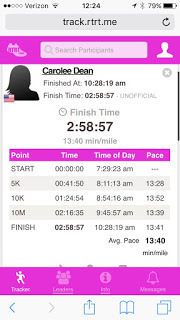
The organizers thought of everything for this race, including a download that allowed my husband to track my progress every 5K. My favorite thing was the yoga mats and rollers at the end, and of course the live concert by Gavin DeGraw.
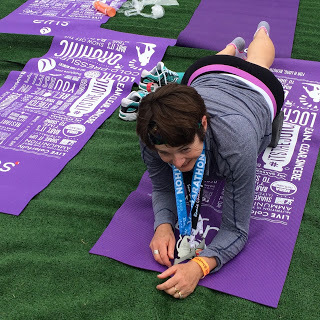 I met so many fun people associated with TeamQuest.
I met so many fun people associated with TeamQuest.
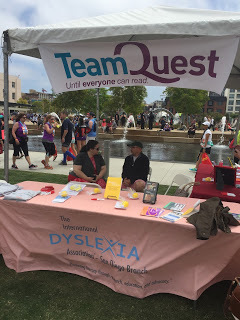
Here I am below before the race with my newfound friend, Ann, from Northern California. She was also running for TeamQuest, representing sunny CA. The line for the shuttle bus was so long that we just walked the two miles to the starting line.
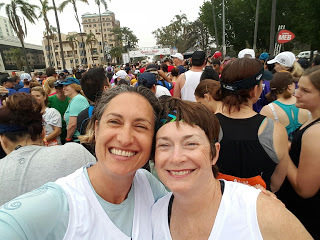
13.1 miles later, here I am at the end of the race, still vertical, with my arms full of SWAG. In between the start line and the finish line were live bands, gatorade, and lots of spectators sitting out on their lawns wishing us well (and offering Uber rides).
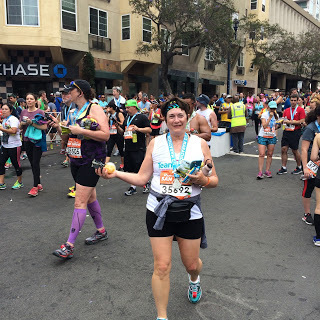
Something truly remarkable happened at mile marker 11 when a mom ran up beside me and asked if I was running for the dyslexia association. See my post over at the SWIDA website to read her story at southwestida.org. It really helped to remind me what all of this was for.

The organizers thought of everything for this race, including a download that allowed my husband to track my progress every 5K. My favorite thing was the yoga mats and rollers at the end, and of course the live concert by Gavin DeGraw.
 I met so many fun people associated with TeamQuest.
I met so many fun people associated with TeamQuest.
Here I am below before the race with my newfound friend, Ann, from Northern California. She was also running for TeamQuest, representing sunny CA. The line for the shuttle bus was so long that we just walked the two miles to the starting line.

13.1 miles later, here I am at the end of the race, still vertical, with my arms full of SWAG. In between the start line and the finish line were live bands, gatorade, and lots of spectators sitting out on their lawns wishing us well (and offering Uber rides).

Something truly remarkable happened at mile marker 11 when a mom ran up beside me and asked if I was running for the dyslexia association. See my post over at the SWIDA website to read her story at southwestida.org. It really helped to remind me what all of this was for.
Published on June 17, 2016 17:10



